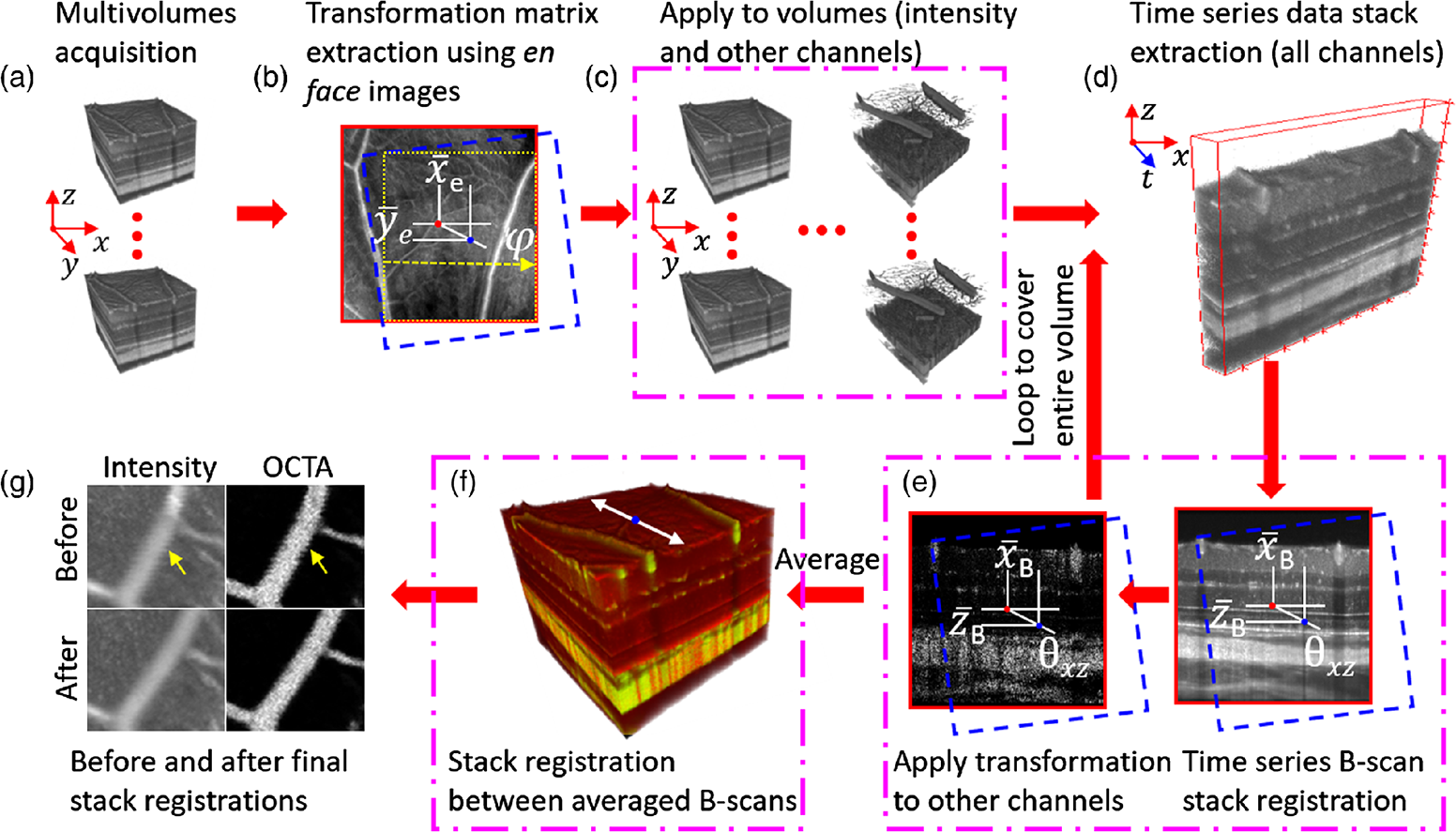Temporal speckle-averaging of optical coherence tomography volumes for in-vivo cellular resolution neuronal and vascular retinal imaging
By Pengfei Zhang, Eric B. Miller, Suman K. Manna, Ratheesh K. Meleppat, Edward N. Pugh, and Robert Zawadzki
Neurophotonics, 6(4), 041105 (2019). https://doi.org/10.1117/1.NPh.6.4.041105
Abstract
It has been recently demonstrated that structures corresponding to the cell bodies of highly transparent cells in the retinal ganglion cell layer could be visualized noninvasively in the living human eye by optical coherence tomography (OCT) via temporal averaging. Inspired by this development, we explored the application of volumetric temporal averaging in mice, which are important models for studying human retinal diseases and therapeutic interventions. A general framework of temporal speckle-averaging (TSA) of OCT and optical coherence tomography angiography (OCTA) is presented and applied to mouse retinal volumetric data. Based on the image analysis, the eyes of mice under anesthesia exhibit only minor motions, corresponding to lateral displacements of a few micrometers and rotations of a fraction of 1 deg. Moreover, due to reduced eye movements under anesthesia, there is a negligible amount of motion artifacts within the volumes that need to be corrected to achieve volume coregistration. In addition, the relatively good optical quality of the mouse ocular media allows for cellular-resolution imaging without adaptive optics (AO), greatly simplifying the experimental system, making the proposed framework feasible for large studies. The TSA OCT and TSA OCTA results provide rich information about new structures previously not visualized in living mice with non-AO-OCT. The mechanism of TSA relies on improving signal-to-noise ratio as well as efficient suppression of speckle contrast due to temporal decorrelation of the speckle patterns, enabling full utilization of the high volumetric resolution offered by OCT and OCTA.
